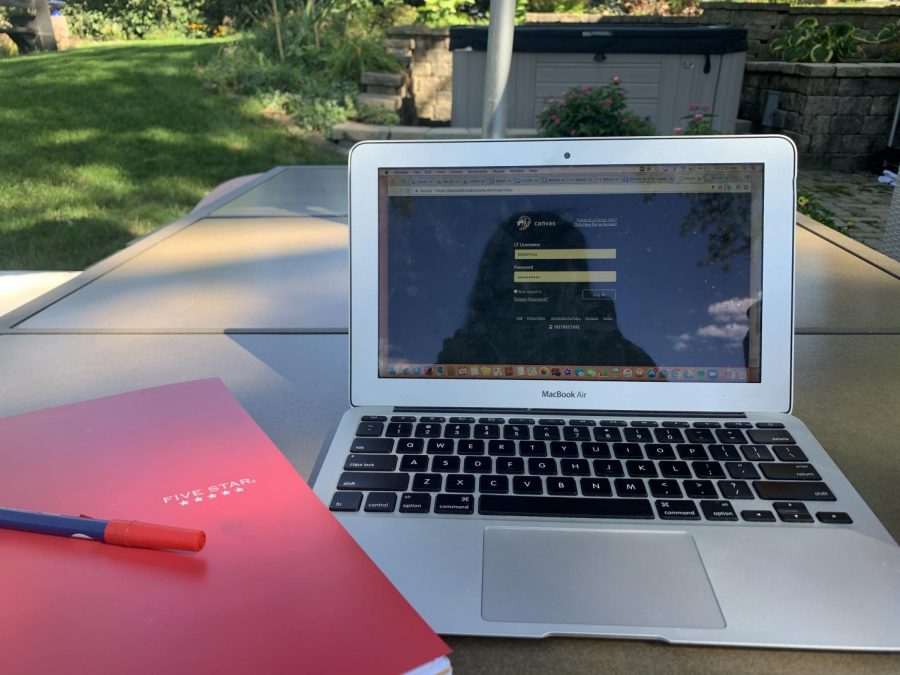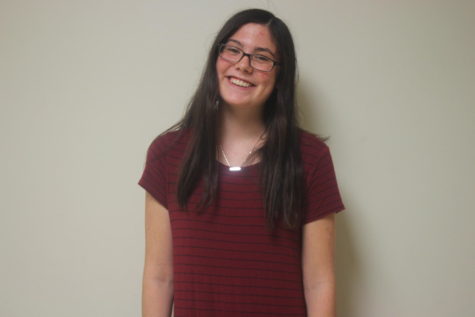LT implements new remote learning model
September 18, 2020
After months of deliberation this summer, LT announced that students would be starting the 2020 fall semester 100% online. Students and staff have since had to adjust to remote learning.
“It’s something that was very disappointing,” Superintendent Timothy Kilrea said. “We want our kids back in school. But we also know that in a pandemic, we’re going to be pretty conservative, listen to the medical experts and err on the safety of our students and staff.”
LT’s remote learning model is based on an A/B block schedule. LT began the block schedule during the spring semester of remote learning after receiving student and parent feedback that the eight-period day with evening homework was overwhelming, Kilrea said.
The original remote learning model announced on Aug. 4 included four days of synchronous learning, with Wednesdays acting as a non-instructional day. However, this model was met with negative feedback from the community.
“People didn’t view [the Wednesday] as a structural day as much as they viewed it as maybe you’re totally removed from the school environment,” Kilrea said.
In response to feedback from our community, Director of Curriculum and Instruction Scott Eggerding worked with his team to increase instructional time, Principal Brian Waterman said. The current model includes synchronous classes Monday-Friday. Mondays (“Lion Days”) include eight 35-minute periods, while Tuesdays/Thursdays (“Gold Days”) and Wednesdays/Fridays (“Blue Days”) include four 75-minute periods.
The synchronous format of this year’s model is a result of students expressing a lack of connection during the spring semester, Kilrea said.
“Even though you’re not with [your teachers and classmates] in person, you can still come in and communicate with them live in the moment,” Angus Allan ‘24 said. “[Synchronous learning] is definitely a lot more helpful, especially when you’re struggling with topics. For someone like me who gets very easily distracted, I can definitely learn a lot more with synchronous lessons.”
The first period of each block day is a lunch period–either fourth or fifth period. Since most students have this free period before their synchronous class starts, it presents the opportunity for students to eventually come on campus for specialty classes, Kilrea said. However, certain populations of students, including LIFE and Transition students, must be brought on campus first, as is compliant with ISBE/IDPH guidance.
“We’re reassessing every day,” Kilrea said. “The original hybrid model was very aggressive, but we’re in the process of finalizing a more conservative hybrid model that we might be able to utilize if our health experts tell us that the numbers are going in such a direction that would allow it. We’d love to implement something.”
In the meantime, teachers and students are adjusting to the realities of remote learning.
For example, teachers have worked to adjust their curriculum to accommodate the shortened synchronous learning time and fit the needs of their students.
After sensing increased anxiety over the college process this year, instructional coach and English teacher Virginia Condon adjusted the timing of the class’s personal narrative assignment in order to give her senior English students the college essay experience right away, she said.
“I shift to the needs of what I feel like I’m hearing from my students—I try to do what is best for them,” Condon said.
Teachers also received more instruction and Zoom training during the three additional institute days before the first day of school. Both Technology Enriched Curriculum (TEC) coaches and instructional coaches presented during these institute days and have continued to offer assistance to teachers.
Instructional coaches are offering Coaches Cafés, Zoom meetings in which they teach new instructional strategies to use online, Condon said. The meetings run twice per month. As of now, they are largely focused on student engagement.
“Nothing prepares you for having students physically in front of you if you are a teacher that loves interacting with your class,” Condon said. “You like to think you’ve planned lessons that are engaging, but it’s a totally different world.”
TEC coaches are available to teachers via email and Zoom calls, TEC coach and biology teacher Callie Salaymeh said. They initially received hundreds of questions a day from teachers.
“There’s a huge range [of questions] based on how tech savvy each teacher is,” Salaymeh said. “But I’ve been super overwhelmed and impressed with the efforts from all the teachers at every level of technology savviness. Most teachers have put in so many extra hours in order to learn what they needed to learn.”
Teachers have especially put a lot of effort into finding ways to connect with their students. LT provided professional training to staff to utilize Zoom features such as breakout rooms to try to connect individually with students, Kilrea said. In addition to checking in on breakout rooms, Salaymeh keeps one student after class each day to talk to them and get to know them better.
“I think the connections you form with your teachers are really important and hard not to have, and they’re harder to form during remote learning,” Abby Deuter ‘22 said. “Getting to know a teacher means that they can find ways to help you learn in the ways that work best for you.”
As LT closes in on one month of remote learning, Waterman has heard from students and is meeting with four separate Student Advisory Councils to get feedback from students on the council and see what adjustments can be made, he said.





















![Movie poster for '[Rec]" (2007).](https://www.lionnewspaper.com/wp-content/uploads/2023/04/rec-640x900.jpg)



